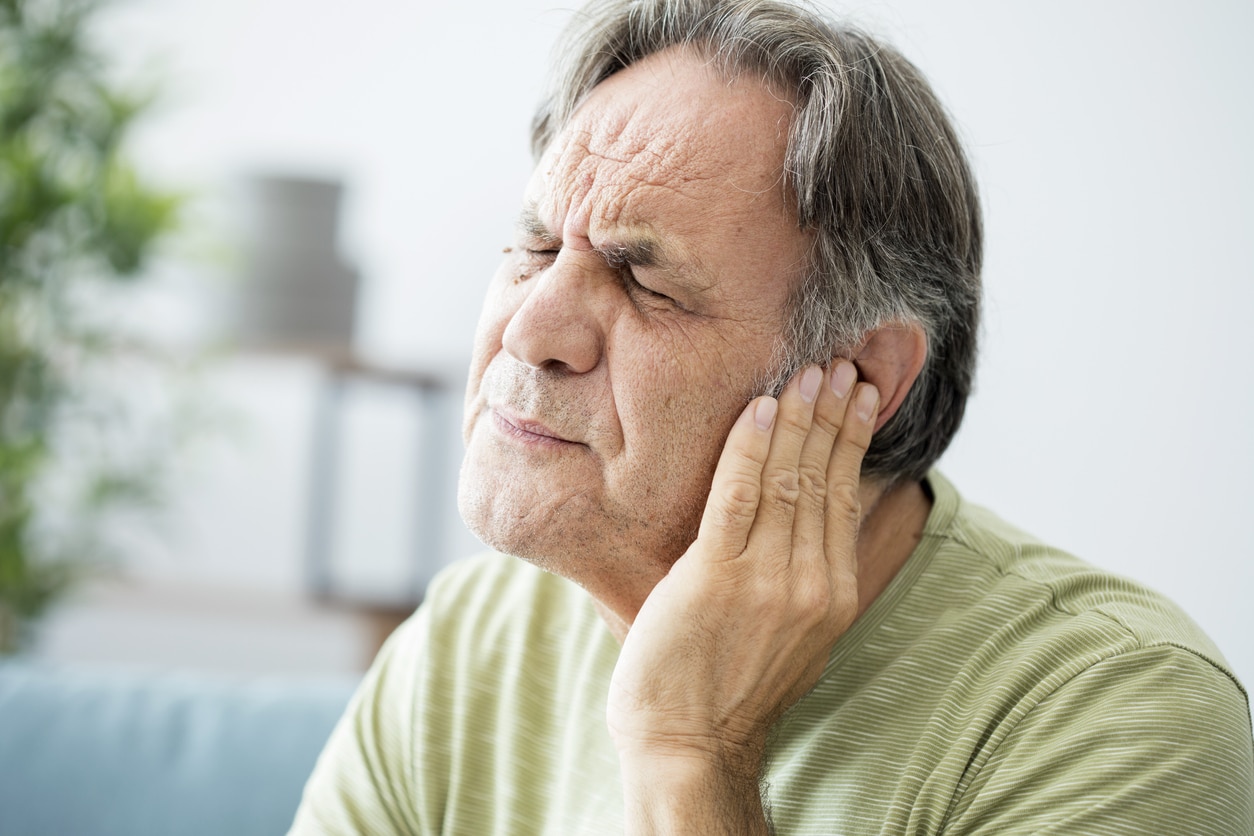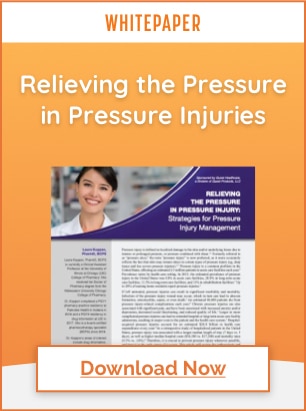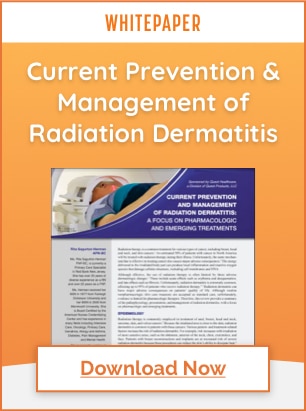
Earwax Impaction in the Elderly: Symptoms & Causes
Earwax, although it seems annoying and unnecessary, serves an important function: it protects ears with both lubricating and antibacterial properties. Earwax (cerumen) is a combination of secretions from the sebaceous glands and the ceruminous glands and it typically moves naturally through the ear canal to the outside of the ear where it flakes off.
If earwax does not migrate out of the ear canal through jaw movements, chewing, and skin growing from the inside of the ear out, earwax can build up or become impacted.
Earwax impaction is a relatively common disorder experienced by approximately 20% of people at some point during their lifetime, and it’s particularly prevalent in the elderly. One study showed that 65.6% of residents in a skilled nursing facility have had cerumen impaction in at least one ear.8
Many people turn to cotton swabs to extract earwax, but this can exacerbate the problem. Cotton swabs and other implements may push earwax further into the ear canal and are a major contributor to developing earwax impaction.
Impacted earwax can cause injury and illness to the ear and can lead to more serious health conditions like ear irritation, loss of balance, and even hearing loss.
Symptoms of Earwax Impaction
Patients with earwax buildup can present with a variety of symptoms, including:
- Ear pain
- Itchiness in the ear
- A foul odor and/or discharge
- Dizziness
- Aural fullness
- Tinnitus
- Hearing loss
- Otitis externa (infection of the outer ear canal)
Buildup of earwax can occur to anyone at any age, however certain populations are more prone to it, including:
- Older people
- People who insert cotton swabs or other items in their ears
- Hearing aid or ear plug use
- Ear canals with an irregular shape
- Certain developmental disabilities
Factors Contributing to Earwax Impaction
In addition to genetically predisposed earwax type and texture (“dry” or “wet”) there are three main factors that contribute to earwax impaction and these can present alone or in combination.
Inadequate Epithelial Migration: Cerumen glands deteriorate with age which results in drier earwax which doesn’t migrate out of the ear canal as easily. Coarser ear canal hair may develop with age as well and become a contributing factor to earwax impaction.
Overproduction: When the rate of earwax production is higher than the earwax migration rate, earwax impaction occurs. If a patient has frequent bouts of impacted earwax, idiopathic cerumen overproduction could be the cause.
Obstruction: The anatomy of a patient’s ear canal plays a large role in their propensity to develop earwax impaction. Exostoses or osteomas (benign bony growths in the ear canal) may block earwax migration. Malformations in the soft tissue can also cause ear canal obstructions; this is most commonly found in patients with a history of ear canal trauma. If the ear canal is overly narrow or tortuous earwax is more prone to obstruction as well.
Earwax Build-Up and Balance
Ears play a vital role in helping maintain balance. There are three fluid-filled canals in the inner ear that sense movement. The sensory information obtained in the inner ear sends signals to the brain to help adjust balance, coordination, and movement. These signals can be disrupted when earwax is pushed up against the eardrum, causing symptoms such as dizziness, nausea, and/or a feeling that the world is spinning.
While the idea of using a cotton swab or other implement to remove patient earwax may seem tempting, it’s only making the problem worse. Items not designed for earwax removal can also cause injury to the ear canal, perforate eardrums, and/or dislocate hearing bones.
Earwax Impaction and Hearing Aid Use
Imbalance is particularly dangerous to the elderly population due to increased risk of falling. Hearing aid use causes higher risk of earwax impaction and may also stimulate glands within the ear to produce more wax than normal. Earwax also hardens and becomes less mobile as we age.
According to the American Academy of Otolaryngology up to two-thirds of people in assisted living suffer from earwax impaction. Between 60% and 70% of hearing aids sent in for repair are damaged as a result of excess earwax build up. Unremoved earwax works its way into the receivers and vents of a hearing aid, and the chemical components of earwax can damage the delicate components, causing vital parts of the hearing aid to degrade.
It is important for patients to frequently clean hearing aids using the following tactics:
- Gently brush earwax or debris off of the microphone
- Use a soft cloth to wipe down the entire hearing aid
- Leave the battery door open at night
- Use a wax pick to carefully remove any material from the air vent
- Wash out any wax that is clogging the tubing
- Remove excess wax from the upper ear canal and outer ear with Clinere® Ear Cleaners
Clinere® Ear Cleaners and Ear Wax Kit
Clinere® Ear Cleaners provide a gentle, effective way to remove unwanted ear wax. Clinere® Ear Wax Kit also includes natural ear oil with high grade natural plant oils to loosen ear wax before removal. Clinere® products are effective for audiology patients prescribed hearing aids, and any individuals experiencing cerumen (earwax) buildup.
Clinere® helps increase the overall health of long-term care patients by reducing secondary ailments that can result from earwax buildup, including vertigo, hearing loss, tinnitus, and the cognitive decline of patients. It can also help improve mental health as hearing impairment can cause frustration, stress, social isolation, paranoia, and depression.4
Request samples of Clinere for your facility today.
Disclaimer: The material contained is for reference purposes only. Quest Healthcare, A Division of Quest Products, LLC, does not assume responsibility for patient care. Consult a physician prior to use. Copyright 2021 Quest Healthcare, A Division of Quest Products, LLC.
Sources:
- https://www.keckmedicine.org/feeling-off-balance-the-problem-might-be-in-your-ears/
- https://www.ncbi.nlm.nih.gov/pmc/articles/PMC4311346/
- https://www.ncbi.nlm.nih.gov/pmc/articles/PMC6990605/
- https://www.ncbi.nlm.nih.gov/pmc/articles/PMC116671/pdf/27.pdf
- https://my.clevelandclinic.org/health/diseases/14428-ear-wax-buildup–blockage
- https://www.beingpatient.com/earwax-dementia
- https://www.cnn.com/2017/01/03/health/earwax-cleaning-guidelines/index.html
- Moore AM, Voytas J, Kowalski D, Maddens M. Cerumen, hearing, and cognition in the elderly. J Am Med Dir Assoc 2002; 3: 136–139.




![[Live Webinar] Neurogenic Bowel Dysfunction in Multiple Sclerosis](https://www.questhealthcare.net/wp-content/uploads/2025/02/325-Quest-Healthcare-Speaker-Session-1-500x383.png)


